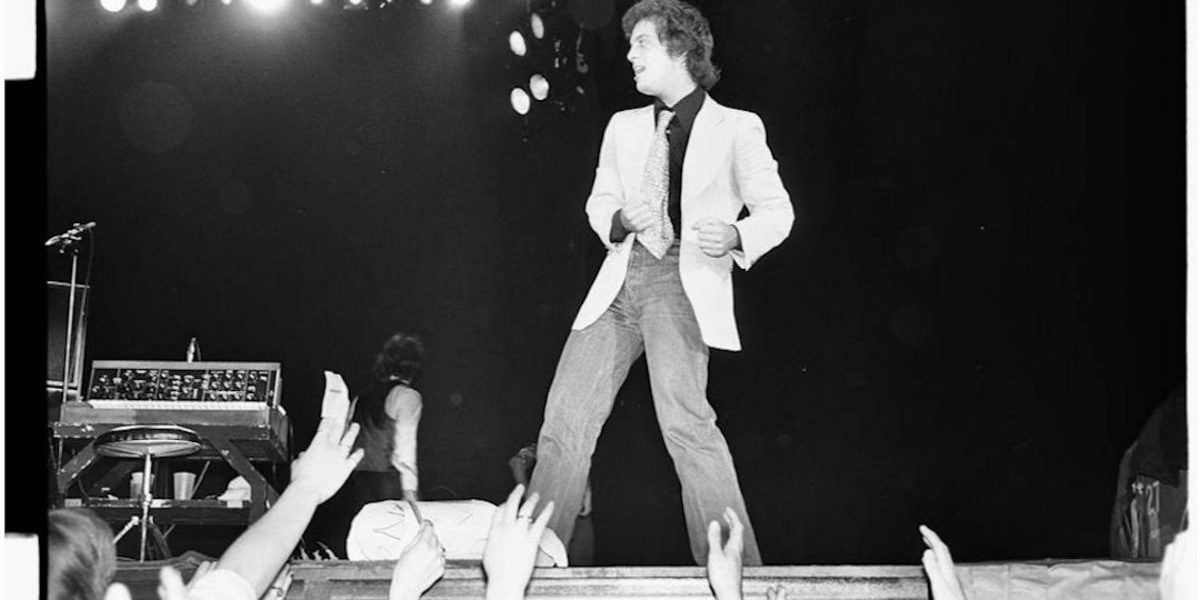In the opening moments of Billy Joel: And So It Goes, which premiered at the prestigious Tribeca Film Festival in New York City, the iconic musician Billy Joel shares a humorous yet self-reflective remark. “The most original thing I’ve ever done in my life is screw up,” he states from his cherished Long Island residence. “That’s not necessarily a bad thing.” This candid admission sets the tone for a film that aims to encapsulate Joel’s illustrious career, revealing both his triumphs and the missteps he humorously refers to as “screw ups.” After all, becoming a successful rock star often involves navigating a maze of challenges, including strained relationships and personal sacrifices, which are part of the inevitable workplace hazards that accompany fame.
It is particularly fitting that this documentary debuts in New York City, the birthplace of Billy Joel and the city that played a pivotal role in his artistic evolution. While he experimented with the California music scene for a time, a fellow artist featured in the film notes that Joel has always been a bridge-and-tunnel guy. His unique ability to blend elements of Broadway, Tin Pan Alley, and the American Songbook into a cohesive, melody-driven sound is a testament to his deep-rooted connection with New York, making his music feel inherently tied to the city.
“I’ve never been comfortable on camera,” Joel admits early in the film. “I can’t hide behind the piano.” This statement highlights the stark contrast between performing for a live audience of tens of thousands and being vulnerable in front of a camera crew. The emotional weight of sharing his life story on screen adds an intriguing layer, revealing the complexities of his persona beyond the stage.
Throughout the first part of And So It Goes, viewers gain insight into Joel’s relentless work ethic and his obsessive passion for music. He is depicted as fiercely loyal to his close friends and family, a trait exemplified by his decision to sign with Columbia Records because they represented Bob Dylan. Despite Dylan’s lack of mainstream success, Joel admired the label for allowing him the creative freedom to thrive in the studio. Furthermore, he recalls turning down a collaboration with the legendary producer George Martin of The Beatles fame, expressing his desire for the inclusion of his band in the process: “Love me,” he recounts saying at the time, “love my band.”
Additional voices featured in the documentary enrich the narrative, painting a fuller picture of Billy Joel beyond the persona of the entertainer. Key figures from his life, including his sister Judy and childhood best friend Jon Small—whose wife Joel later married—offer personal anecdotes that reveal the complexities of his journey. Noteworthy appearances include renowned artists like John Mellencamp, Paul McCartney (who confesses he wishes he had written Joel’s iconic “Just the Way You Are”), Pink, Garth Brooks, Clive Davis, Jackson Browne, and others, all contributing to the tapestry of Joel’s life and career.
The documentary also features Joel’s first wife, Elizabeth Weber, who played a significant role in his life. Previously married to Joel’s best friend, she eventually became his manager and a driving force behind his success. The film underscores her importance in his life, portraying her as not only his muse but also as a steadfast support system and his most ardent champion, leaving viewers to ponder how different his trajectory might have been without her unwavering support.
One of the film’s shortcomings is its overly structured narrative, which tends to follow a chronological order that may detract from a deeper understanding of how Joel channels his emotions into his creative process at the piano. As a viewer who has always considered herself a casual fan, I found the insights into Joel’s background, upbringing, and family life enlightening, yet much of this information could be gleaned from a simple online search. The audience is left yearning to understand how a seemingly ordinary, shy kid from Long Island managed to create timeless melodies and recordings that resonate with audiences worldwide.
Part one concludes around the time of Joel’s split from Weber and the release of the 1980 album Glass Houses. During this period, dubbed “America’s rock poet” in one promotional clip shown in the film, Joel was at the height of his creative prowess.
For those seeking a deeper exploration of Joel’s artistic wellspring and the processes that propelled him to become one of the best-selling recording artists globally, And So It Goes may not entirely satisfy. However, it offers a captivating glimpse into the life of an artist who remained true to his passion, even amidst doubt—from both others and himself. This documentary is an engaging trip through the highs and lows of his remarkable journey.
Recently, Joel disclosed a diagnosis of normal pressure hydrocephalus, a brain disorder that affects various cognitive functions, including balance, vision, and hearing, often confused with Alzheimer’s or Parkinson’s diseases. Due to this condition, he has canceled all upcoming concert dates, making the release of this film even more poignant and timely.
Joel’s song “Summer, Highland Falls” from the 1976 album Turnstiles plays during the film segment that chronicles his return to New York from California in the mid-1970s. The opening lyrics beautifully encapsulate the essence of And So It Goes and reflect Joel’s tumultuous career and personal journey: “They say that these are not the best of times / But they’re the only times I’ve ever known.”
Fans can look forward to streaming Billy Joel: And So It Goes on HBO this summer, marking an essential addition to the narrative of one of music’s most enduring figures.
Comprehensive Ranking of Billy Joel’s Albums: From Least to Most Acclaimed
We meticulously analyze and rank the piano legend’s albums, from ‘Cold Spring Harbor’ to ‘River of Dreams,’ to determine their standing from worst to best.
Gallery Credit: Matt Springer

Here you can find the original article; the photos and images used in our article also come from this source. We are not their authors; they have been used solely for informational purposes with proper attribution to their original source.





